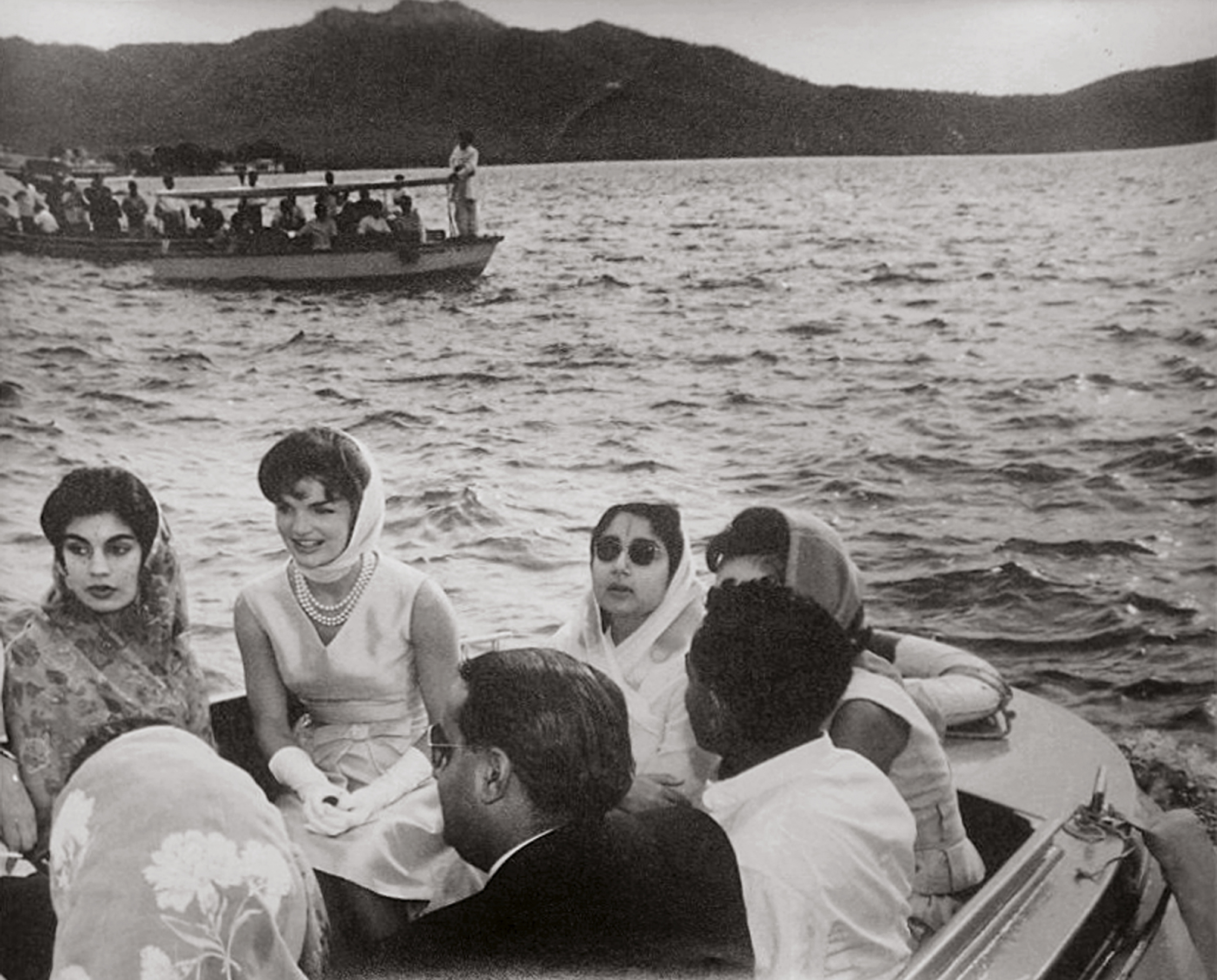
Tags for: The Power of Pleasure
- Magazine Article
- Exhibitions
The Power of Pleasure
Indian court paintings indulge the senses
June 1, 2023
Appears in Cleveland Art, 2023, Issue 2

At the height of springtime, on March 16, 1962, America’s First Lady, Jacqueline Kennedy, arrived in Udaipur, the capital of Mewar in India’s northwestern state of Rajasthan. A photograph in the exhibition A Splendid Land shows the First Lady in a boat with her sister, Princess Lee Radziwill of Poland, and members of the Mewar royal family, with picturesque hills in the background. That Udaipur was included in Ms. Kennedy’s short official tour of India speaks to the timeless power of pleasure in diplomacy—a power the rulers of Udaipur understood well. They created in their semiarid mountainous kingdom a paradisical landscape replete with man-made lakes, sprawling hunting grounds, and gleaming architectural spaces that both attracted political allies and provided outward proof of their rulers’ righteousness and success.
The destination of the First Lady and her party was Jagmandir, an island palace that seems to float magically in a lake at the heart of Udaipur. Nearly two centuries before this visit, in early April 1767, the Maharana (“great king”) Ari Singh II (r. 1761–73) took the same trip across the lake, as commemorated in the painting Maharana Ari Singh II enjoying Jagmandir. This expansive painting was created using the painstaking techniques and precious materials of miniatures that were being made throughout much of India, but artists in 1700s Udaipur used them in a new way: to offer cinematic pleasurescapes.
Image

In the painting, time luxuriously unfolds across gardens and courtyards. Musicians fill the air with rousing sounds that mingle with the scent of pomegranate and vernal blooms. The Maharana himself, recognizable by the solar nimbus behind his head, appears in six sumptuous spaces: strolling through the wooded garden at the top, meandering around a pool at the left, resting in a crimson tent, enjoying the walkways across a water court, shooting fish at the lower left, and watching the crocodiles’ feeding time at the lower right. In every scene, his beloved is by his side, and gorgeously dressed women carry his sword and shield, his royal parasol, his royal standard, a mirror, and his hookah; others tend the gardens, play music, sing, dance, and work the water wheels that irrigate the pools. At the right, nobles and guests play parcheesi in a grape arbor and gather to enjoy conversation, while servants bring brass vessels of food and drink. The depiction of one day’s activities is a microcosm of an idyll, confirmation of the prosperity and abundance of the land.
Twenty of the 50 works are on loan from the City Palace Museum of Udaipur, and most have never been on public view prior to this exhibition tour. Since their creation, these treasures in the collection of the Maharanas of Mewar were only brought out for gatherings of connoisseurs or the arrival of diplomats. They functioned to cement friendships by memorializing shared events and to inspire awe by evoking emotions associated with moments of remarkable wonder, joy, and thrill. Accompanied by an ambient soundscape created by artist and filmmaker Amit Dutta, the paintings exuberantly show us the Maharanas’ world of lake palaces, the City Palace, the royal hunting grounds, and, having passed through the monsoon rains, heaven on earth in Udaipur.